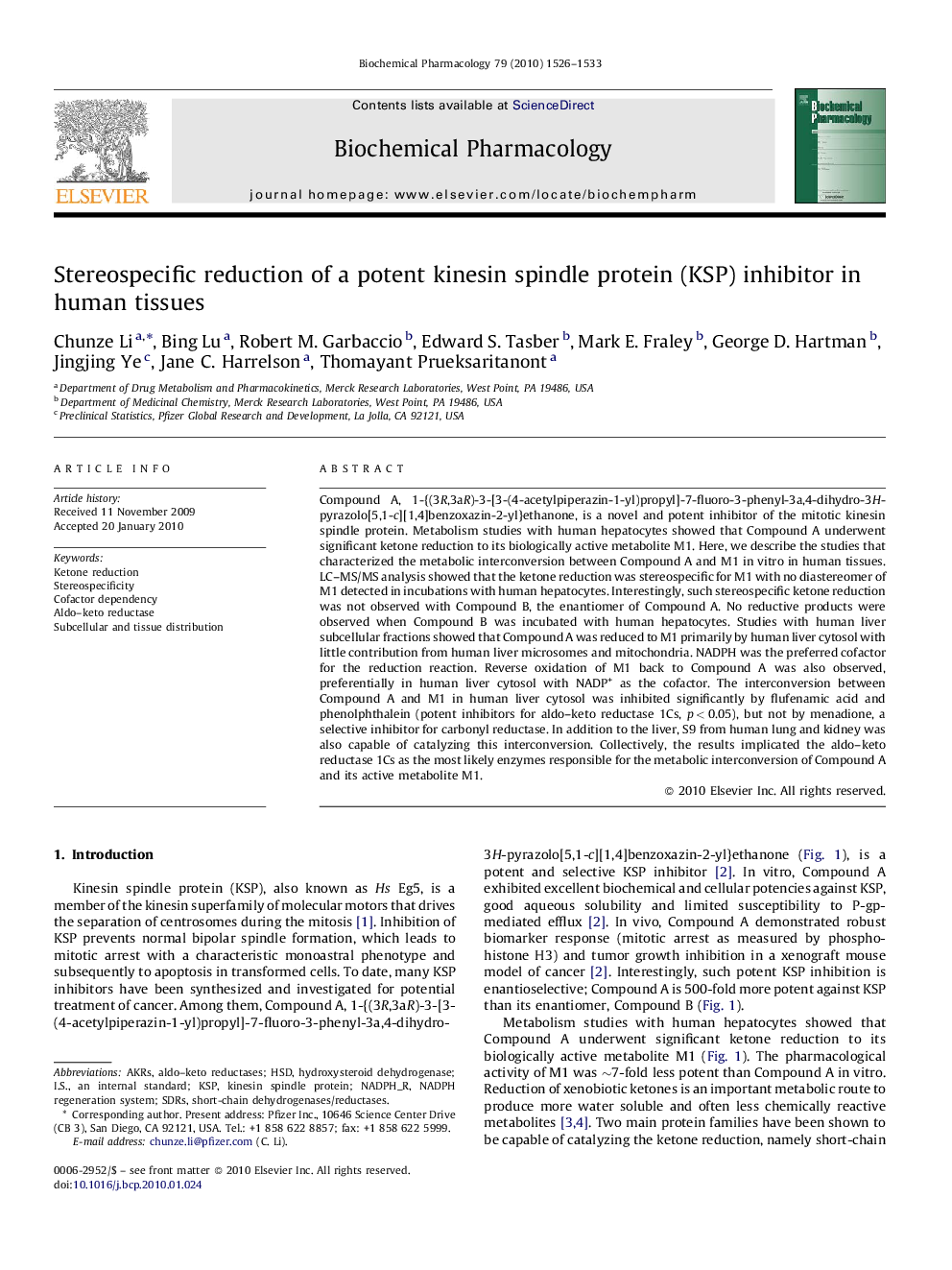| Article ID | Journal | Published Year | Pages | File Type |
|---|---|---|---|---|
| 2513658 | Biochemical Pharmacology | 2010 | 8 Pages |
Abstract
Compound A, 1-{(3R,3aR)-3-[3-(4-acetylpiperazin-1-yl)propyl]-7-fluoro-3-phenyl-3a,4-dihydro-3H-pyrazolo[5,1-c][1,4]benzoxazin-2-yl}ethanone, is a novel and potent inhibitor of the mitotic kinesin spindle protein. Metabolism studies with human hepatocytes showed that Compound A underwent significant ketone reduction to its biologically active metabolite M1. Here, we describe the studies that characterized the metabolic interconversion between Compound A and M1 in vitro in human tissues. LC-MS/MS analysis showed that the ketone reduction was stereospecific for M1 with no diastereomer of M1 detected in incubations with human hepatocytes. Interestingly, such stereospecific ketone reduction was not observed with Compound B, the enantiomer of Compound A. No reductive products were observed when Compound B was incubated with human hepatocytes. Studies with human liver subcellular fractions showed that Compound A was reduced to M1 primarily by human liver cytosol with little contribution from human liver microsomes and mitochondria. NADPH was the preferred cofactor for the reduction reaction. Reverse oxidation of M1 back to Compound A was also observed, preferentially in human liver cytosol with NADP+ as the cofactor. The interconversion between Compound A and M1 in human liver cytosol was inhibited significantly by flufenamic acid and phenolphthalein (potent inhibitors for aldo-keto reductase 1Cs, p < 0.05), but not by menadione, a selective inhibitor for carbonyl reductase. In addition to the liver, S9 from human lung and kidney was also capable of catalyzing this interconversion. Collectively, the results implicated the aldo-keto reductase 1Cs as the most likely enzymes responsible for the metabolic interconversion of Compound A and its active metabolite M1.
Keywords
Related Topics
Health Sciences
Pharmacology, Toxicology and Pharmaceutical Science
Pharmacology
Authors
Chunze Li, Bing Lu, Robert M. Garbaccio, Edward S. Tasber, Mark E. Fraley, George D. Hartman, Jingjing Ye, Jane C. Harrelson, Thomayant Prueksaritanont,
